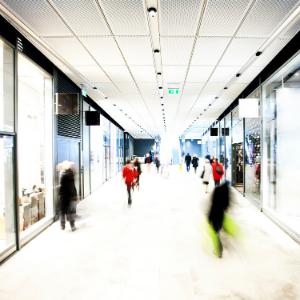Top 20 Hotspots in Your Workplace

 [updated 2022] How long are virus and bacteria "active" on surfaces? Where are the most likely hotspots in workplaces? Thanksgiving is upon us in the USA and the numbers of coronavirus (COVID-19) positive cases continue to rise at alarming numbers. Why? One significant reason is attributed to the amount of time we spend indoors. Business owners, facility managers, office managers and facilities management companies are challenged to ensure the safety of their employees and to prevent the spread of illness in their facilities.
[updated 2022] How long are virus and bacteria "active" on surfaces? Where are the most likely hotspots in workplaces? Thanksgiving is upon us in the USA and the numbers of coronavirus (COVID-19) positive cases continue to rise at alarming numbers. Why? One significant reason is attributed to the amount of time we spend indoors. Business owners, facility managers, office managers and facilities management companies are challenged to ensure the safety of their employees and to prevent the spread of illness in their facilities.
Know the facts. Persistence of influenza on surfaces in the Journal of Hospital Infection (2017) tested the viability of five influenza strains seeded on three surfaces (cotton, microfiber, and stainless steel) over time, finding that viable virus was detected for up to two weeks on stainless steel and up to one week on cotton and microfiber samples. Depending on credible, multi-decade experts, who specialize in the commercial cleaning industry is necessary. In this article, you’ll understand where your hotspots lie and why it's important to disinfect and follow best practices. System4 IPS is here to help you avoid mistakes and pitfalls, not just amidst the pandemic, but even after COVID-19 is a concern.
That is an alarming statistic. We are surrounded by germs. Learn the exact details. Understand the most touched areas in your work place and inform your janitorial team of this top 20 list.
- What we need to know about how our behavior and how it effects hotspots

The Environmental Protection Agency (EPA) reports Americans spend 93% of their life indoors—87% of their life within a building, then another 6% within their vehicles. That’s only 7% of your entire life spent outdoors—or only one half of one day per week in the fresh air. These
statistics can be found on the EPA website .
- Where are the hotspots?
 Understanding where the top high-touch areas of your workplace is a great place to begin…but cleaning them with higher frequency is best practice. If your janitorial team was disinfecting these areas every week, it should be increased to be included on their daily rotation.
Understanding where the top high-touch areas of your workplace is a great place to begin…but cleaning them with higher frequency is best practice. If your janitorial team was disinfecting these areas every week, it should be increased to be included on their daily rotation.
- What to use when battling millions of bacteria?
There is only so much time in the day and available personnel power. If large areas are in need of regular cleaning, turning to fogging and  electrostatic spraying may be required. It's recently been determined that floors are one of the top surfaces for spreading viruses. Learn more. Choosing a cleaning service with these specialized tools and the years of experience utilizing them is key. These devices emit a fine mist that evenly coats the hard-to-reach areas of your space, destroying harmful microbes wherever they are hiding, from hairline cracks to carpeting to ceiling tiles. To elevate your confidence further, layering on antimicrobial coatings will provide lasting protection for months.
electrostatic spraying may be required. It's recently been determined that floors are one of the top surfaces for spreading viruses. Learn more. Choosing a cleaning service with these specialized tools and the years of experience utilizing them is key. These devices emit a fine mist that evenly coats the hard-to-reach areas of your space, destroying harmful microbes wherever they are hiding, from hairline cracks to carpeting to ceiling tiles. To elevate your confidence further, layering on antimicrobial coatings will provide lasting protection for months.
There’s a difference between cleaning and disinfecting. Cleaning solutions will remove grime and grease. To kill germs and bacteria, disinfecting solutions are needed.  The array of products for both categories is lengthy and contain different active ingredients. Choosing the right one that is best for your building can be daunting. Bleach can be damaging, while all-natural products can be ineffective. The EPA published List-N disinfectants that are approved for killing viruses, including the coronavirus.
The array of products for both categories is lengthy and contain different active ingredients. Choosing the right one that is best for your building can be daunting. Bleach can be damaging, while all-natural products can be ineffective. The EPA published List-N disinfectants that are approved for killing viruses, including the coronavirus.
Professional Tip:
 Most disinfectants need about 5-10 minutes of dwell time, which means it must remain wet on a dirty surface for a period of time to be effective. Professional cleaning services will know and adhere to this practice.
Most disinfectants need about 5-10 minutes of dwell time, which means it must remain wet on a dirty surface for a period of time to be effective. Professional cleaning services will know and adhere to this practice.Many states are on the verge of another shutdown. Businesses in the healthcare, education, grocery and other day to day necessities are considered essential. It's important for managers to understand the different areas inside their work place environments that are centers for bacteria and cause the spread of viruses. They must consider adding additional janitorial rotations, raising the awareness of their staff and customers, while also ensuring their cleaning supplies and resources are at the proper levels for the upcoming winter and flu season. Communicating and sharing your disinfection plan is also key to being prepared.



.jpg)
